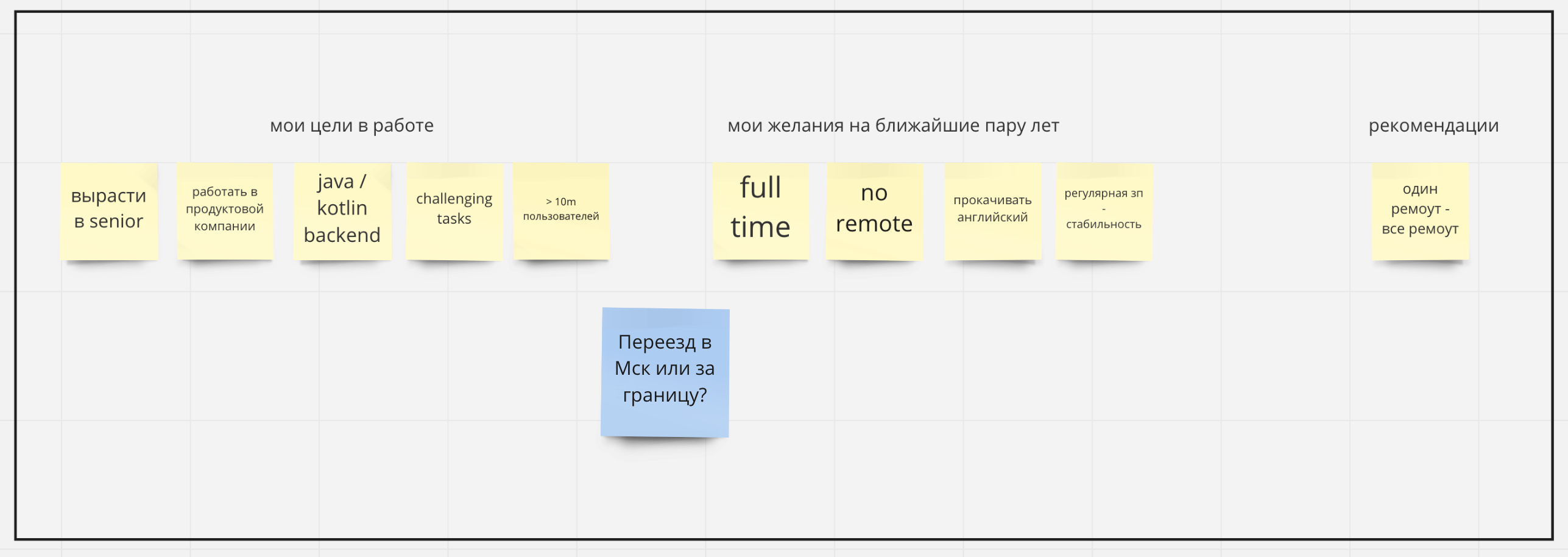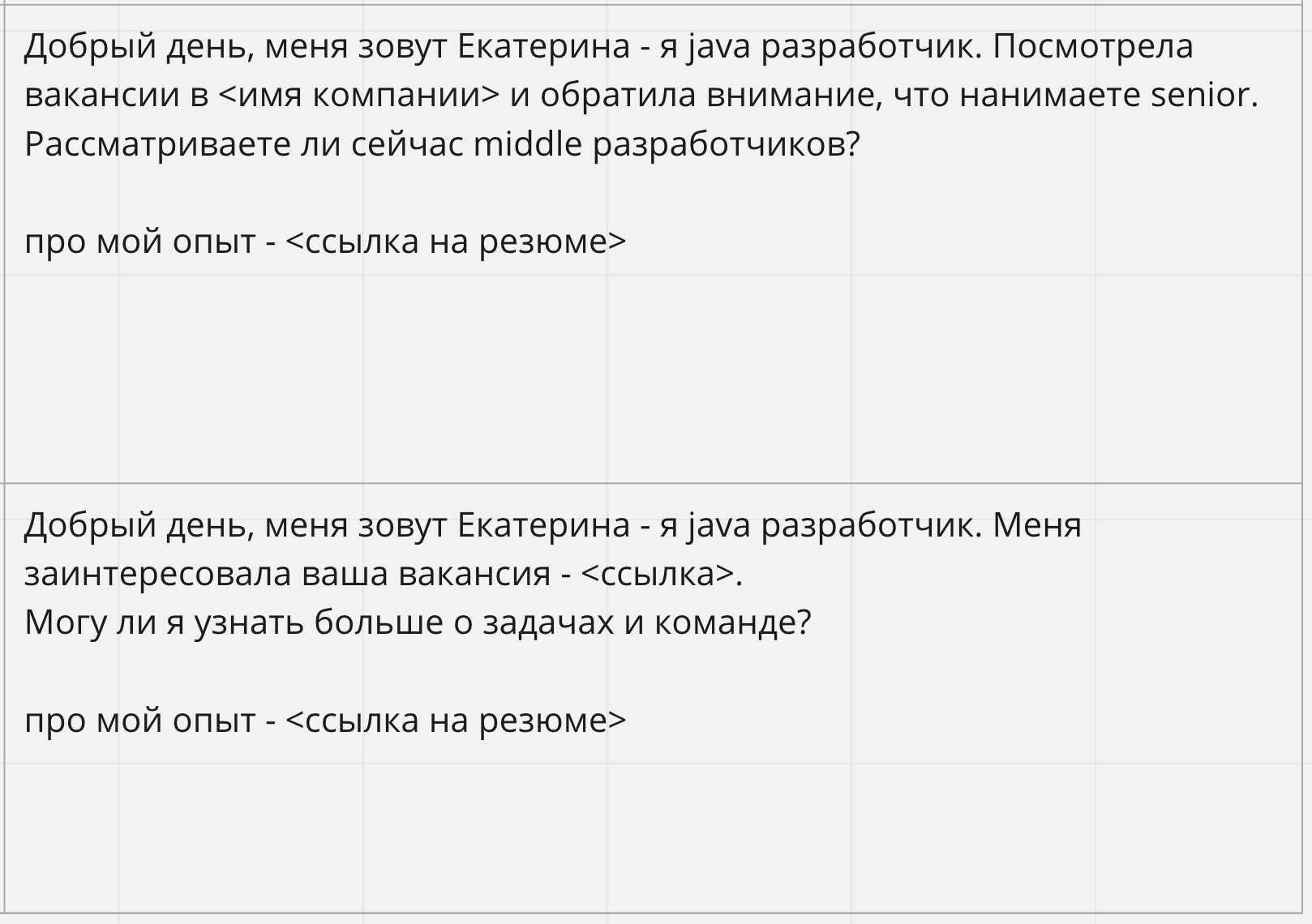Company selection
The first thing to start with is my goals and desires at work. It is important to sit down and think, what do I want to achieve in the next couple of years, where do I want to live, what to do, what technologies to use?
We form a portrait of the desired company, I made 3 columns:
- Goals in work
- Desires for the coming years
- Recommendations (advice from friends about choosing a company)

Search for vacancies and requirements
Now it's time to open HeadHunter and the career pages of companies to study: what stack, tasks, conditions and knowledge requirements - I wrote out the last one to draw up a preparation plan for interviews.
Preparation plan
Preparing for technical interviews turned out to be very exciting, and finally there was time to delve into the basics of java: what memory is spent on, understand the complexity of operations in standard collections, and read Java concurrency in practice. This time proved to be an important respite from the work that was spent on replenishing theoretical knowledge.
To compose topics and questions, I used:
- Guide "I want to work at Google" (took themes as a basis)
- Requirements from vacancies
- Interview questions shared by my friends (I found many interesting and difficult questions)
To solve problems:
- Leetcode (there are tasks from interviews from Yandex, Alibaba, Google, and solutions are available with a subscription)
- HackerRank
Regular problem solving teaches you to quickly assess the complexity of algorithms and come up with several ways of solutions, you start to think wider.
The result was a general plan:

An example of one of the topics: I

added a time line with deadlines at the top - this helps to stay on course and to do theory every day. Prepared a question - colored the sticker green.

Summary
While writing my resume, I opened up feedback from my former colleagues to find strengths and memorable tasks.
Work experience describe:
- Briefly the main product and the number of users
- My influence on the product: task -> result for the company
- Technology stack
What to tell about yourself:
- Describe the qualities that will help you in your work
- Attach links to your publications
- Tell about yourself as a person
Example:


Also, not all recruiters love the HeadHunter template, so it's better to write a resume "by hand" using a template .
Training technical interviews
Interviewing is the same skill as cycling. The first time you are worried, your voice may tremble, and the presentation of yourself and your competencies is not yet so confident. And the first live-coding for a beginner is a huge stress.
Therefore, I responded to different companies in order to practice and be ready for anything. In addition, there are new difficult questions in the interviews. Here you need to practice asking the company questions about the processes, the project and the team, and then negotiate the offer.
List of questions to ask the employer:
- , , ( ), ( , )
- / /
- :
- :
- ? ?
- ( , )
- : , ? ?
Production interviews
It's time to look for companies in which you already want to work and receive invitations for interviews.
To find companies: I opened HeadHunter, looked at technical conference participants and asked friends for their opinions about their places of work. So I selected the companies that are interesting to me.
To get an invitation for an interview:
- Invite friends to refer you (greatly increases the chance that your resume will be reviewed)
- Write to developers and recruiters on LinkedIn (it turned out to be very useful, many developers honestly talk about the pros and cons of the project and can give recommendations)
- Apply to career page and HeadHunter (response probability below)
An example of how to write on LinkedIn:


I couldn't keep all the information in my head, so I wrote it down in a table. Recordings help you quickly switch context between interviews, know the stage of interviews with each company and not forget the details of the project.

Offers
And now the most pleasant moment has come - companies want to see you in their team and are waiting for an answer.
It remains only to finally discuss salary expectations, bonuses and communicate your decision.